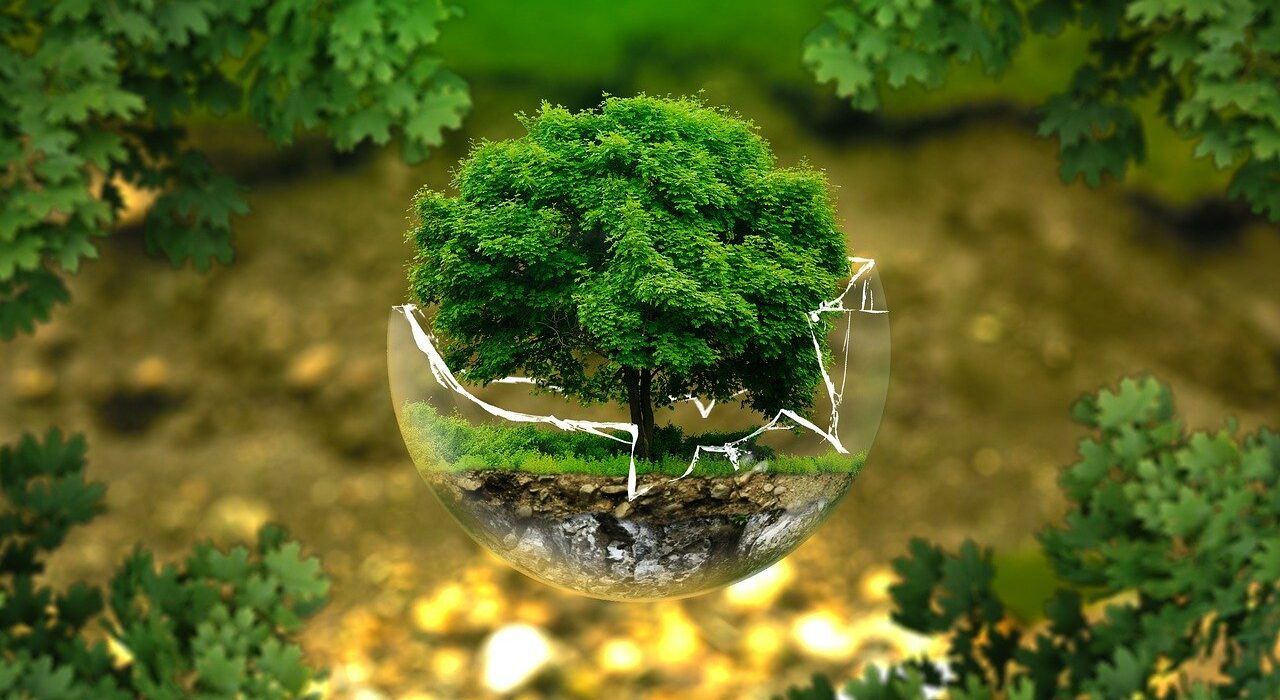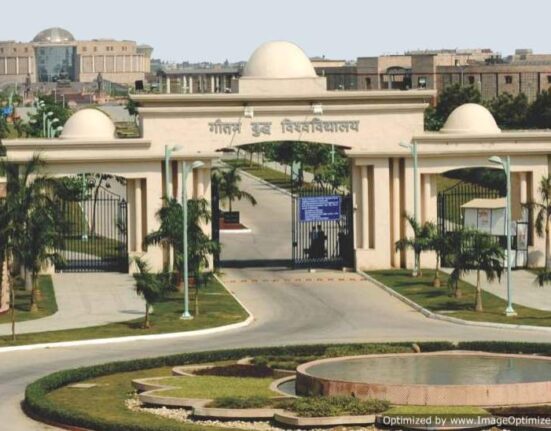Saumya Garg ( 3RD Year, BBA LL.B.(H.), School of Law University of Petroleum and Energy Studies, Dehradun) has Written this Article “Right to Healthy Environment Under Constitution”.
INTRODUCTION
The right to a healthy environment is a basic human right. It recognizes that every individual has the right to live in a clean and healthy environment. Also, that is free from pollution and other environmental hazards that can harm their health and well-being. Several international treaties recognize the right to a healthy environment and is increasingly being recognized as a fundamental human right in national constitutions.
India is one such country that recognizes the right to a healthy environment as a fundamental right under its Constitution. This article aims to provide an elaborative discussion on the right to a healthy environment concerning constitutional law provisions in India[1].
BACKGROUND
The right to a healthy environment is an evolving concept that has gained prominence in recent years. It has its roots in the broader concept of the right to life, of international human rights law. The right to life has been interpreted by courts and human rights bodies to include the right to a healthy environment.
In India, the right to a healthy environment has been recognized as a fundamental right by the judiciary. The Indian Constitution does not explicitly mention the right to a healthy environment. However, the judiciary has interpreted the right to life under Article 21 of the Constitution to include the right to a healthy environment[2].
Article 21 of the Indian Constitution states that “No person shall be deprived of his life or personal liberty except according to procedure established by law.” The judiciary has interpreted this provision to include the right to a healthy environment. Environmental pollution and degradation can have a significant impact on a person’s health and well-being.
In India, the right to a healthy environment is not only recognized as a fundamental right but also as a legal right. The Indian judiciary has recognized the right to a healthy environment as a legal right under various environmental laws, such as the Water (Prevention and Control of Pollution) Act, 1974, the Air (Prevention and Control of Pollution) Act, 1981, and the Environment (Protection) Act, 1986.
The right to a healthy environment in India also finds its roots in international environmental law, such as the Rio Declaration on Environment and Development and the Stockholm Declaration on the Human Environment[3].
IMPORTANCE OF THE RIGHT TO A HEALTHY ENVIRONMENT
The right to a healthy environment is essential for the protection and promotion of human rights. A healthy environment is essential for enjoying rights like life, health, and livelihood. A polluted environment can have a detrimental impact on a person’s health, leading to various health problems and diseases.
The right to a healthy environment is also important for the protection of biodiversity and the conservation of natural resources. A healthy environment is necessary for the survival of various species, and the loss of biodiversity can have a significant impact on the functioning of ecosystems[4].
Furthermore, the right to a healthy environment is important for the sustainable development of a country. A clean and healthy environment is necessary for the development of industries and businesses. Environmental pollution and degradation can hurt economic growth and development[5].
CONSTITUTIONAL PROVISIONS ON THE RIGHT TO A HEALTHY ENVIRONMENT
As mentioned earlier, the Indian Constitution does not explicitly mention the right to a healthy environment. However, the right to a healthy environment has been recognized as a fundamental right under Article 21 of the Constitution. The judiciary has interpreted the right to life under Article 21 to include the right to a healthy environment[6].
The judiciary has also recognized the right to a healthy environment as a legal right under various environmental laws, such as the Water (Prevention and Control of Pollution) Act, 1974, the Air (Prevention and Control of Pollution) Act, 1981, and the Environment (Protection) Act, 1986.
The interpretation of the right to life under Article 21 of the Constitution has been a key factor in recognizing the right to a healthy environment in India. Article 21 states that “No person shall be deprived of his life or personal liberty except according to procedure established by law.” The Supreme Court has interpreted this to mean that the right to life includes the right to a clean and healthy environment. In several landmark judgments, the court has emphasized that the right to life is not just a right to exist but also a right to live with dignity, and a clean and healthy environment is essential for living with dignity.
Recognition of the Right to a Healthy Environment under Indian Laws
In addition to interpreting the right to life under Article 21 to include the right to a healthy environment, the Supreme Court has also recognized the importance of environmental protection in other provisions of the Constitution. For instance, Article 48A of the Constitution directs the state to protect and improve the environment and to safeguard the forests and wildlife of the country. Similarly, Article 51A (g) imposes a fundamental duty on every citizen of India to protect and improve the natural environment.
The significance of recognizing the right to a healthy environment in India is immense. India is one of the most polluted countries in the world. Moreover, the environment is facing severe degradation due to factors such as industrialization, urbanization, and deforestation. The recognition of the right to a healthy environment in India has led to the development of several laws and regulations. It is aimed at protecting the environment and preventing pollution and ecological degradation.
For instance, the NGT Act, 2010, established the National Green Tribunal to handle cases related to environmental protection and conservation. The Air (Prevention and Control of Pollution) Act, 1981, and the Water (Prevention and Control of Pollution) Act, 1974, aim to prevent and control air and water pollution, respectively. The Wildlife Protection Act, 1972, seeks to protect wildlife and their habitats.
The Constitution of India does not explicitly recognize the right to a healthy environment, the Supreme Court has interpreted the right to life under Article 21 to include the right to a clean and healthy environment. The recognition of this right is essential for the protection and preservation of the environment and the enjoyment of other fundamental rights.
Related Case Laws
Subhash Kumar v. State of Bihar (1991)
In the case of Subhash Kumar v. State of Bihar (1991)[7], the Supreme Court held that the right to life under Article 21 includes the right to a clean and healthy environment. The court observed that the environment is a part of life and that the protection and preservation of the environment are essential for the enjoyment of other fundamental rights such as the right to life and livelihood. The court also emphasized the duty of the state to protect the environment and prevent pollution and ecological degradation.
T.N Godavarman Thirumulpad v. Union Of India (1996)
In another landmark judgment, T. N. Godavarman Thirumulpad v. Union of India (1996)[8], the Supreme Court emphasized the importance of the right to a healthy environment for the enjoyment of other fundamental rights. The court held that the right to life under Article 21 includes the right to a clean and healthy environment and that the state must protect and preserve the environment. The court also held that the enjoyment of other fundamental rights such as the right to health, livelihood, and education is dependent on the protection and preservation of the environment.
CHALLENGES FOR SECURING THE RIGHT TO A HEALTHY ENVIRONMENT
Despite the recognition of the right to a healthy environment in various legal frameworks, there are several challenges faced in maintaining this right. Some of these challenges are[9]:
Enforcement
While there are laws and regulations aimed at protecting the environment, their enforcement remains a significant challenge. Weak enforcement due to inadequate resources, capacity, and political will undermines environmental protection measures.
Industrialization and urbanization
As countries undergo industrialization and urbanization, there is an increase in pollution, deforestation, and ecological degradation. The pressure to create jobs and economic growth often leads to the relaxation of environmental regulations, resulting in environmental damage.
Climate change
Climate change poses a significant threat to the environment and human health. Rising temperatures, extreme weather events, and sea-level rise are just some of the impacts of climate change that can lead to the deterioration of the environment and the health of individuals.
Inadequate public participation
The right to a healthy environment also includes the right to participate in environmental decision-making processes. However, many people are excluded from these processes due to a lack of access to information, limited resources, and marginalization.
Lack of awareness
The right to a healthy environment and its connection to human health is not widely known. The lack of awareness often results in apathy towards environmental issues and a lack of action to address them.
Globalization
Global trade and commerce growth has increased the transportation of goods and people across borders. This has led to the spread of invasive species, the introduction of new diseases, and the pollution of air and water bodies, leading to environmental degradation.
The right to a healthy environment faces several challenges, including weak enforcement, industrialization and urbanization, climate change, inadequate public participation, lack of awareness, and globalization. Addressing these challenges requires concerted efforts from the government. As well as from civil society, and individuals to ensure the effective protection and preservation of the environment and the enjoyment of the right to a healthy environment.
SUGGESTIONS AND RECOMMENDATIONS:
Securing the right to a healthy environment requires a comprehensive approach involving various stakeholders, including governments, civil society organizations, individuals, and the private sector. Below are some of the solutions and strategies that can be adopted to secure the right to a healthy environment:
Strengthening legal frameworks
Governments can strengthen their legal frameworks to protect the environment and enforce existing laws and regulations. This includes the development and implementation of environmental impact assessments, pollution control measures, and penalties for environmental violations.
Increasing public participation
The right to a healthy environment includes the right to participate in decision-making processes that affect the environment. Governments can facilitate public participation by providing access to information, organizing public hearings, and consulting with affected communities.
Promoting sustainable development
Sustainable development seeks to balance economic, social, and environmental goals. Governments can promote sustainable development by adopting policies and programs that promote renewable energy, green technologies, and sustainable agriculture.
Encouraging corporate responsibility
The private sector can play a critical role in protecting the environment by adopting environmentally sustainable practices, investing in green technologies, and reducing their carbon footprint.
Promoting education and awareness
Education and awareness are essential for promoting environmental stewardship and securing the right to a healthy environment. Governments can invest in public education programs and campaigns to increase awareness of environmental issues and their impact on human health.
Strengthening international cooperation
Environmental problems such as climate change and pollution are global and require international cooperation. Governments can work together to develop and implement international agreements and protocols aimed at protecting the environment and securing the right to a healthy environment.
Securing the right to a healthy environment requires a comprehensive approach involving legal frameworks, public participation, sustainable development, corporate responsibility, education and awareness, and international cooperation. By adopting these strategies and working together, governments, civil society organizations, and individuals can protect the environment and ensure the enjoyment of the right to a healthy environment for all[10].
CONCLUSION
In conclusion, the right to a healthy environment is a fundamental human right that is essential for the enjoyment of other human rights such as the right to life, health, and development. The degradation of the environment poses a significant threat to human health, the economy, and the planet as a whole. Urgent action is needed to protect the environment and secure the right to a healthy environment for all.
Governments, civil society organizations, and individuals must work together to strengthen legal frameworks, promote sustainable development, encourage corporate responsibility, increase public participation, promote education and awareness, strengthen international cooperation, invest in green technologies, and provide access to justice. By adopting these recommendations, we can ensure that everyone can live in a healthy and sustainable environment, thereby fulfilling our collective responsibility to protect the planet and safeguard the health and well-being of future generations[11].
For a detailed article on Fundamental Rights under Constitution: Click Here
Reference
[1] Boyd, D., Chapter 2: The Right to a Healthy and Sustainable Environment in Aguila, Y. and Viñuales, J.E., 2019. A Global Pact for the Environment-Legal Foundations. The University of Cambridge.
[2] Ibid.
[3] Pathak, Puneet, Human Rights Approach to Environmental Protection (February 17, 2014). OIDA International Journal of Sustainable Development, Vol. 07, No. 01, pp. 17-24, 2014, Available at SSRN: https://ssrn.com/abstract=2397197
[4] Pratyush Sachan, Intersection between Human Rights and Environmental Law: The Scenario in India, 4 (2) IJLMH Page 592 – 597 (2021), DOI: http://doi.one/10.1732/IJLMH.26105
[5] Supra at 4.
[6] P. Leelakrishnan, Law and Environment (Chapter 10 at 144, Eastern Book Company, India 1992)
[7] 1991 SCR (1) 5
[8] 2 SCC 267
[9] Pau de Vilchez, Annalisa Savaresi, The Right to a Healthy Environment and Climate Litigation: A Game Changer?, Yearbook of International Environmental Law, 2023;, yvac064, https://doi.org/10.1093/yiel/yvac064
[10] Awuku, E. O. (1994). The Right to Clean Environment: Lessons from India and Tanzania. Verfassung Und Recht in Übersee / Law and Politics in Africa, Asia, and Latin America, 27(4), 516–532. http://www.jstor.org/stable/43110697
[11] Ibid.
![]()







Leave feedback about this